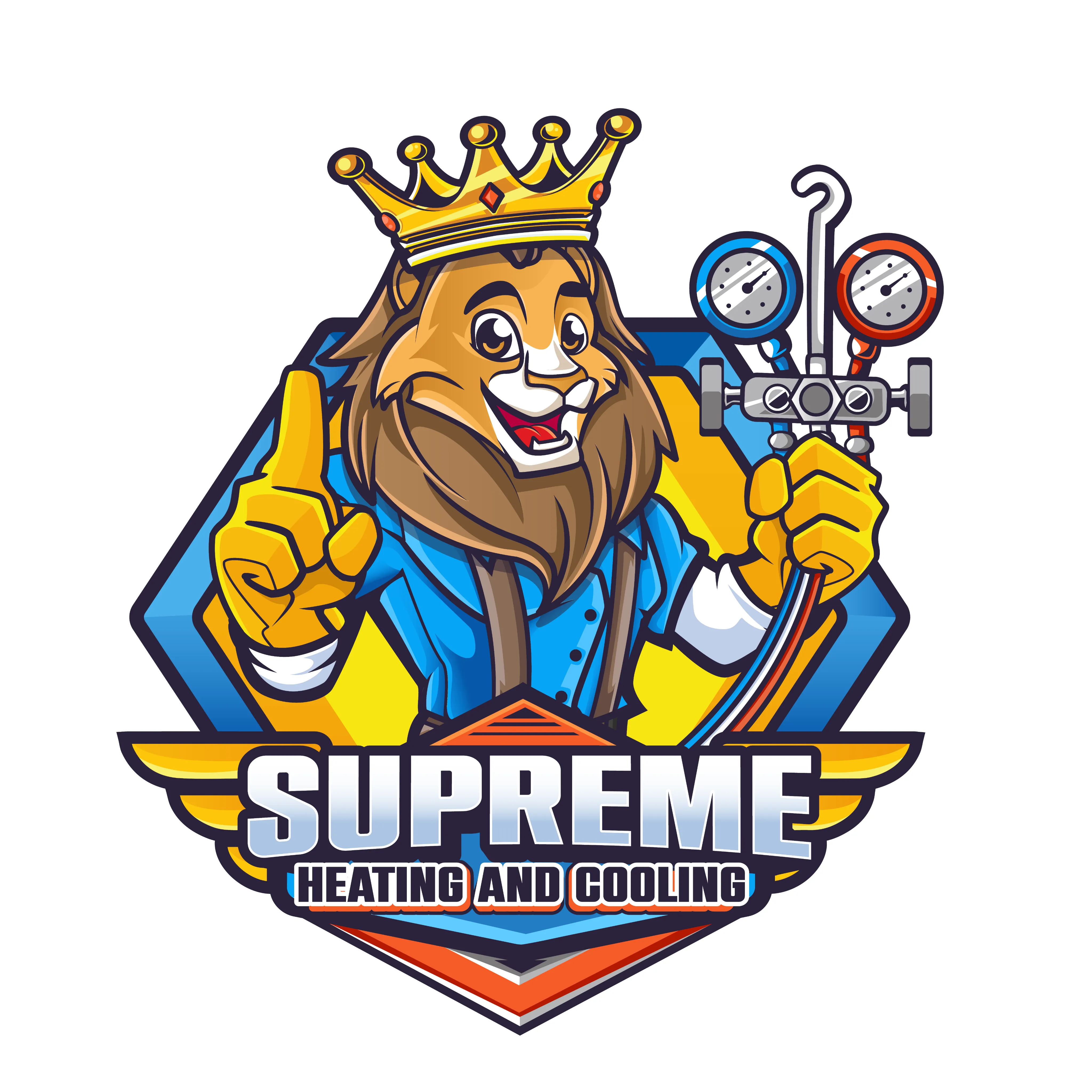.jpeg)
When your AC system stops keeping up in the summer heat, it’s easy to blame the thermostat or the refrigerant. But one part that homeowners in Plum often overlook is the AC fan blade. It might look like a simple piece of metal or plastic, but when it’s damaged, it can throw off the entire system. Left unchecked, it can put extra stress on the motor, disrupt airflow, and affect overall comfort inside your home.
Detecting fan blade problems early can make a big difference. Whether your AC is still underperforming after a filter change or making strange noises when it turns on, the fan blade might be to blame. Understanding the signs of damage can help you know when it’s time to reach out to our technicians before the issue turns into a costly repair.
Common Indicators of AC Fan Blade Damage
Recognizing a damaged fan blade begins with paying close attention to how your AC system sounds and behaves. These clues are often minor in the beginning but tend to get worse if they’re ignored. Homeowners in Plum usually notice subtle differences long before the problem becomes severe. Here are the most common warning signs to look for:
– Unusual noises: A scraping or whirring sound when the AC kicks on could mean the fan blade is bent or making contact with other internal components. This type of noise often worsens over time.
– Reduced airflow: If the air coming out of your vents feels weak or barely noticeable, it might signal that the fan blade isn’t spinning properly or at all. This reduces circulation and puts more strain on the system.
– Vibrations or wobbling: When a fan blade is loose or imbalanced, the AC unit may shake or vibrate while it runs. These movements can create additional wear on other parts over time.
You might also feel inconsistent cooling across different rooms or notice that your energy bills are creeping up for no obvious reason. While these signs don’t always point to the fan blade, they’re worth checking by a trained set of eyes who can pinpoint the issue quickly.
An example most homeowners in Plum can relate to involves suddenly having to turn the thermostat lower just to stay cool like they used to. This demand on the system often doesn’t match the output, and that’s usually a sign that something inside like the fan blade is not doing its job efficiently.
Continue monitoring your AC closely for these indicators. Spotting them early can spare you more expensive repairs down the road and help maintain home comfort during hot summer months.
Causes of AC Fan Blade Damage
AC fan blade issues don’t happen without a cause. Most of the time, problems build up little by little, with no clear warning until the symptoms become noticeable. Understanding what triggers this kind of damage can help Plum homeowners focus on prevention rather than repairs.
One of the most common causes is debris buildup. Outdoor AC units collect leaves, dust, pollen, and even small sticks. Over time, these materials can block airflow or get into the fan housing. If a stick or hard object makes contact with the spinning fan blade, it can dent or bend it out of shape. In worst-case scenarios, the blade might snap or come loose entirely.
Then there’s regular wear. AC fan blades spin thousands of times a day during summer. This constant motion slowly wears down screws, blades, and the motor connection. If even one component becomes weak, the whole system can start shaking or malfunctioning. That’s especially true during a heatwave when your system is working harder than usual.
Improper installation or past repairs done without care can also lead to long-term issues. A blade might be installed unevenly or with the wrong size fastener. This doesn’t always show up right away, but over time the imbalance affects the motor and causes unnecessary vibration. Bent or uneven fan blades can also put pressure on the motor bearings, which shortens the entire system’s lifespan.
It helps to remember that the fan blade is a moving part exposed to outdoor elements. That means even careful usage can’t fully prevent damage, but being aware of what causes it gives you more control. Keeping the surrounding area free from vegetation and having trained technicians check for small issues before they grow can help lower your risk.
Impact of Fan Blade Damage on Your AC System
One small problem with an AC fan blade can affect how the entire system works. Poor airflow is usually the first result. When fan blades don’t function properly, the air circulation across your home weakens. That means longer cooling cycles and less comfort indoors. It may take rooms much longer to reach the set temperature, or they may stay stuffy and warm even with the AC running.
Cooling efficiency suffers next. A damaged blade can force the motor to work harder than it’s built to. While the motor compensates for a while, overuse leads to overheating and higher energy use. This doesn’t just increase your electricity bill during the hottest months of the year — it can also cause the motor to burn out completely, sometimes requiring a full system replacement.
On top of that, mechanical stress becomes a real concern. A vibrating or noisy system often points to fan blade imbalance, which creates uneven pressure throughout the unit. That stress affects other nearby components, from the motor mounts to the compressor. If left unresolved, it can cause a chain reaction of damage, putting the AC’s long-term reliability at risk.
Homeowners in Plum should take these warning signs seriously. Something as simple as a slight bend in a fan blade today can turn into a major breakdown before the summer ends. Keeping your system running smoothly starts with making sure all parts, especially moving ones like the fan blade, are in good shape.
When to Seek Professional Help
Not every AC issue is visible to the average homeowner. Some symptoms, like vibration or low airflow, might be confused with clogged filters or duct issues. That’s why it’s so important to involve our professionals when damage is suspected. They have the tools to take apart the unit safely and inspect components like fan blades against manufacturer specs.
A few signs mean it’s time to stop troubleshooting and contact our technicians:
1. Loud scraping or grinding noises that persist for more than one cycle
2. Shaking or rattling you can feel through the walls or nearby furniture
3. An AC that turns on but barely pushes out cold air despite normal settings
4. A spike in energy use or cooling bills with no change in routine
Waiting on these problems can make the repair harder and more expensive. Our technicians can quickly identify if it’s a fan blade issue or if other parts are also affected. More importantly, they can verify that the blade is seated properly, balanced, and safe to run long-term.
Avoiding further damage requires more than just shutting off the unit. Even if the system seems to settle down after standing idle, turning it back on without a full inspection could make things worse. That’s why Plum homeowners are better off letting our technicians find and correct the issue right away.
Ensuring Long-Lasting AC Performance in Plum
Ongoing AC maintenance is the best way to avoid the stress and costs that come with damaged fan blades. It doesn’t require anything complicated or expensive on your end, either. A few small habits and annual check-ins go a long way.
Here are some practical tips to help protect your AC system in Plum:
1. Keep the area around your outdoor AC unit clear of bushes, grass clippings, and leaves.
2. Make sure your unit sits level on a stable pad to avoid vibration-related wear over time.
3. If you notice your AC making new noises, don’t ignore them. Unusual sounds should be checked early.
4. Schedule inspections in the spring and mid-summer to check for dirt accumulation, worn parts, or blade alignment issues.
5. Replace air filters regularly to prevent dirt from cycling inside the system, which increases strain on internal parts.
Besides regular maintenance, having qualified professionals install or inspect your system also helps reduce potential problems. Proper AC installation in Plum means every moving part is balanced and secure before full operation begins. That step reduces early wear on components like fan blades and creates stronger performance from the start.
Fan blade damage might seem like a minor issue at first, but it often leads to bigger problems when ignored. By catching small warning signs and relying on trained support when needed, Plum homeowners can keep their homes consistently cool all summer long. Maintaining airflow and system health doesn’t have to be complicated. It just comes down to paying attention and acting at the right time.
If your cooling system is underperforming due to fan blade issues or general wear, it may be time to explore a trusted AC installation in Plum to restore comfort and efficiency to your home. Supreme Heating and Cooling is committed to delivering reliable solutions that keep your system running smoothly. For a quick estimate or to book a service visit, please contact us today.

.svg)

.webp)


.svg)
.webp)
.svg)
